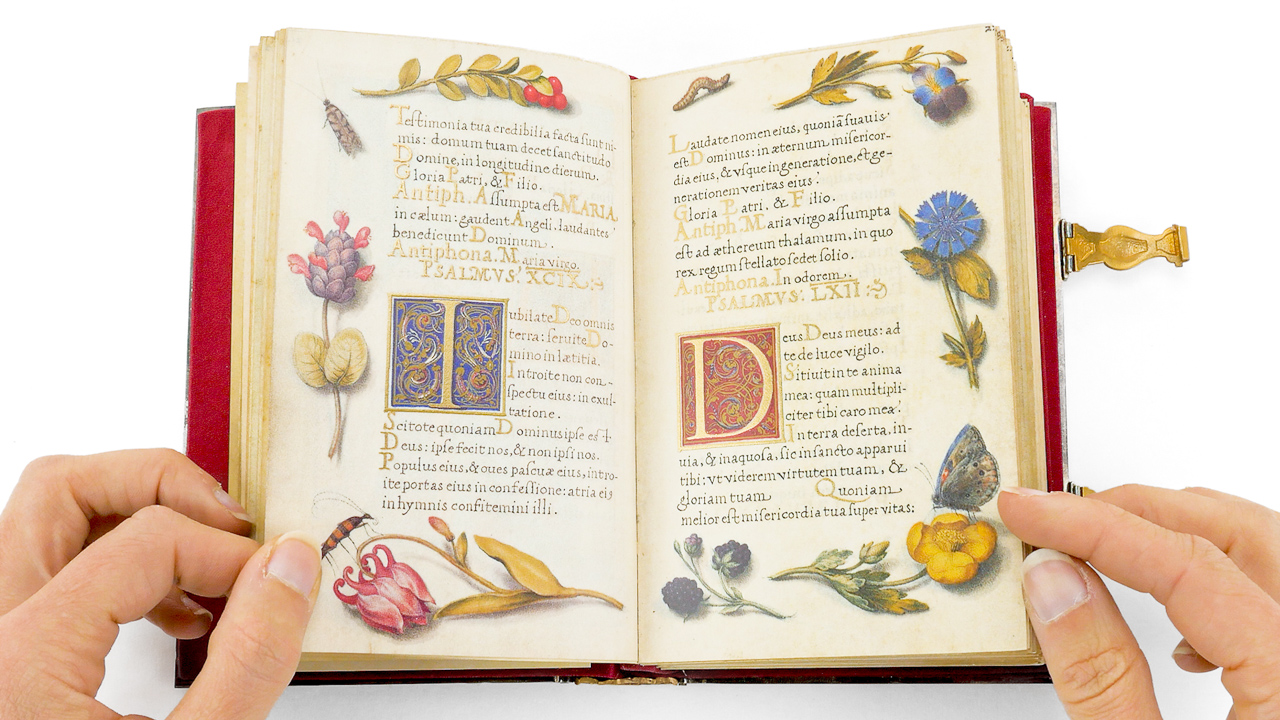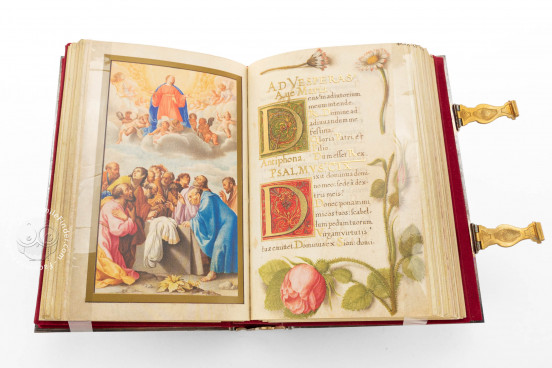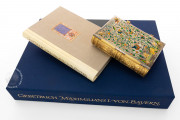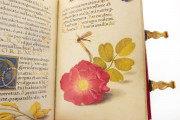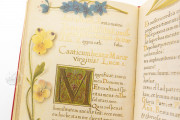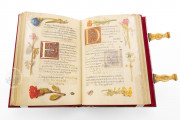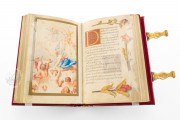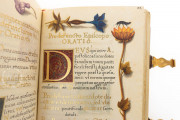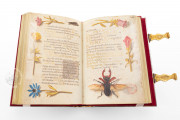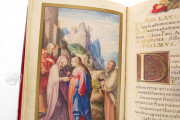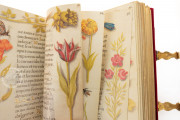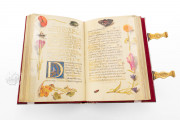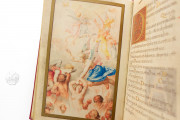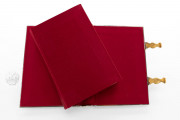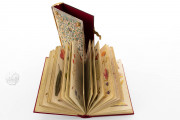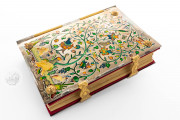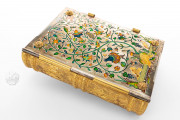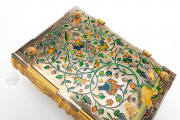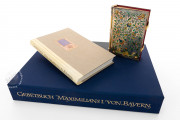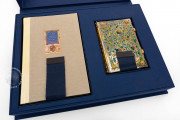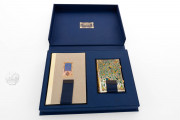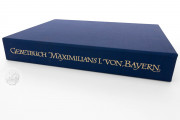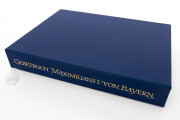The Prayer Book of the Elector Maximilian I of Bavaria is a Christian devotional book small enough to hold comfortably in the hand. The pages of the manuscript were created in two phases in the early seventeenth century to fit an already existing treasure binding. Its nine full-page miniatures and the painted title page were created around 1623 in Munich at the behest of Maximilian to elevate the sumptuousness of a manuscript already lavishly illuminated in Prague between 1604 and 1612. All but two of its 264 text pages feature naturalistic depictions of plants, insects, and animals in the margins.
The genesis of Maximilian's prayer book is unusual and complicated. In Nuremberg in 1574, master goldsmith Hans Lencker (1523-1585) created the silver binding with deep-cut enamels of figural and decorative motifs. That binding was probably commissioned by Albrecht V (1528-1579), Duke of Bavaria, but it was empty of any contents it may have had by 1611.
A Close Collaboration in Prague
The text pages feature the work of two painters who executed the naturalia in the margins and probably two more painters who specialized in the painted initials. The painters of the marginal images sometimes completed their work before the scribe wrote the text, and the painters sometimes added the marginal plants and insects to pages already penned by the scribe. Their collaboration must have been very close. The initials were only added after the text and marginal images had been executed.
Nature's Wonders Copied from Art
The illusionistically rendered flora and fauna that populate the margins—and occasionally parts of a page left blank at the end of a section of text—are painted in subtle colors using fine brush strokes, sometimes mixed with stippling.
The plants and insects appear to cast shadows on the page, adding to the illusion of three-dimensionality. These specimens, however, have not been copied from nature but from art available at the court of Rudolf II (1552-1612), Holy Roman Emperor, in Prague, including works by Joris Hoefnagel (1542-1601), his son Jacob Hoefnagel (d. ca. 1632), and Jacob de Gheyn (1565-1629).
Grand Compositions in Miniature
The Christian subjects of the full-page miniatures are painted in a more robust palette than the naturalia. These miniatures and the painted title page have been attributed to Johann Matthias Kager (1575-1634), who was probably working at the behest of Maximilian I (1573-1651), Elector of Bavaria, in whose Kunstkammer (art collection) the manuscript was kept. Kager based his miniatures on contemporary paintings and engravings created north and south of the Alps, including compositions by Carlo Saraceni (1579-1620).
Square Capitals and Decorative Grotesques
The manuscript is written in a studied Humanistic Minuscule, and the painted initials are executed in gold on colored grounds featuring grotesques—that is, motifs derived from ancient Roman decorative wall painting. These were known, above all, from the Golden House of Nero excavated in Rome (a "grotto"), hence the designation "grotesque." The rubrics are in gold, with headings in gold Square Capitals.
A Book Made for Its Binding
The book must have been planned for its binding, although it is unclear how painters and scribes in Prague could have known the size and shape of that binding. The manuscript has an inner binding of red silk over pasteboard that fits into Lencker's silver binding.
The manuscript remained in the possession of the ruling Wittelsbach family of Bavaria, moving to the Schatzkammer (treasure collection) in 1730 and entering the Hofbibliothek (court library) in 1785, whence it was transferred to the Bayerische Staatsbibliothek.
We have 2 facsimiles of the manuscript "Prayer Book of Elector Maximilian I of Bavaria":
- Das Gebetbuch Kurfürst Maximilians I. von Bayern (Standard Edition) facsimile edition published by Mueller & Schindler, 1986
- Das Gebetbuch Kurfürst Maximilians I. von Bayern (Deluxe Edition) facsimile edition published by Coron Verlag, 1986

